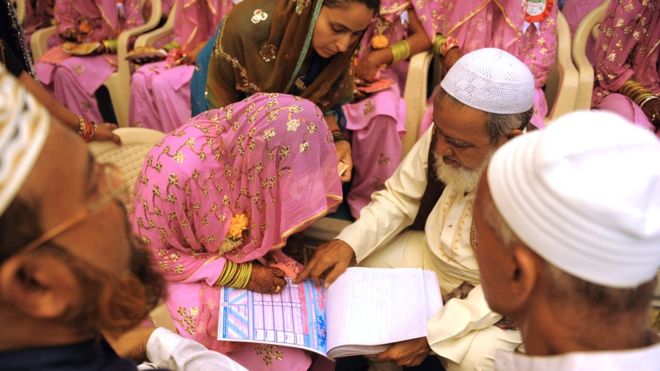As the Union government plans to introduce Child Marriage (Amendment) Bill, 2021, the Muslims across the country – from Mewat in Haryana to Hyderabad in Telangana – are rushing to marry their daughters before the law is implemented.
The Muslim community has the highest percentage of child marriage in India. As the government plans to extend the marriageable age for girls from 18 to 21, the conservatives in the community are in hurry to marry off their daughters.
Child Marriage (Amendment) Bill, 2021, was introduced by the Minister of Women and Child Development Smriti Irani in Lok Sabha on December 21 and has been referred to the parliamentary standing committee. The newly introduced bill defines a child as a person (male or female) who has not attained 21 years of age, thus making the marriage of any person below 18 illegal.
In Mewat, Maulvis are busy nowadays because the Muslim community is hurrying to get their daughters married. “When to get married is a personal choice, our fundamental right, the government or the law should not interfere in that. ‘Hukoomat’ (the government) must rethink his decision of the new law for women,” says Mufti Tarif Salim Nadwi of Mewat, Haryana.
Similarly, in Hyderabad also, there is a hurry to marry the daughters. The problem is more acute in the city because the Telangana government gives 1 lakh rupees to girls who attain the age of 18 to cover the marriage expenses. Once the new law is notified, the Telangana government led by KCR will be forced to change the incentive to those marrying after the age of 18, and those marrying before the legal age will be ineligible for the 1 lakh rupees.
Most of these people planned to marry the daughters in late 2022 or 2023 but fearing the scheme, they are preponing the marriage in order to claim 1 lakh rupees legitimately.
“Families are getting the nikah done so that they can apply for the scheme immediately and get the money in the next few months. Once that is processed, they can proceed with the vidaais,” said Feroz Khan, a local leader from the area, as per a report by Times of India. According to him, more than 40 nikahs are lined up for the next few days.
The conservative practices among the Muslim community have kept them poor, backward, and uneducated – thus, being the biggest burden on the treasury. The Muslim community enjoys the most benefit from the public welfare schemes because they are the poorest and backward.
The lower caste among the Hindus capitalised on the reservation benefits and post-1991 economic liberalization which opened the roads to prosperity for common people. However, the people from the Muslim community, the majority of whom are included in the OBC category, failed to capitalize on both.
The income of Muslim families is very low. In urban areas, the female worker participation rate is good for other communities but it is still the lowest among the Muslims. This is also due to the fact that Muslims who lack education, are easily influenced by the diktats of Imams and Ulemas, who stand against women’s participation in the modern formal workforce.
The number of salaried workers in the formal public and private sector jobs is the lowest among Muslims as well. Representation of the community is also low in high-level government jobs like civil services, judiciary, etc. The low participation of the female workforce, low formal employment among the male workforce, low representations in bureaucracy, judiciary, and government power structure hurts the income and economic prospects of the Muslim population.
Unless the Muslim community sheds the conservative practices and marches towards modernization, the people in the community will remain poor and backward and continue to live off the public welfare schemes of the central and state government.
